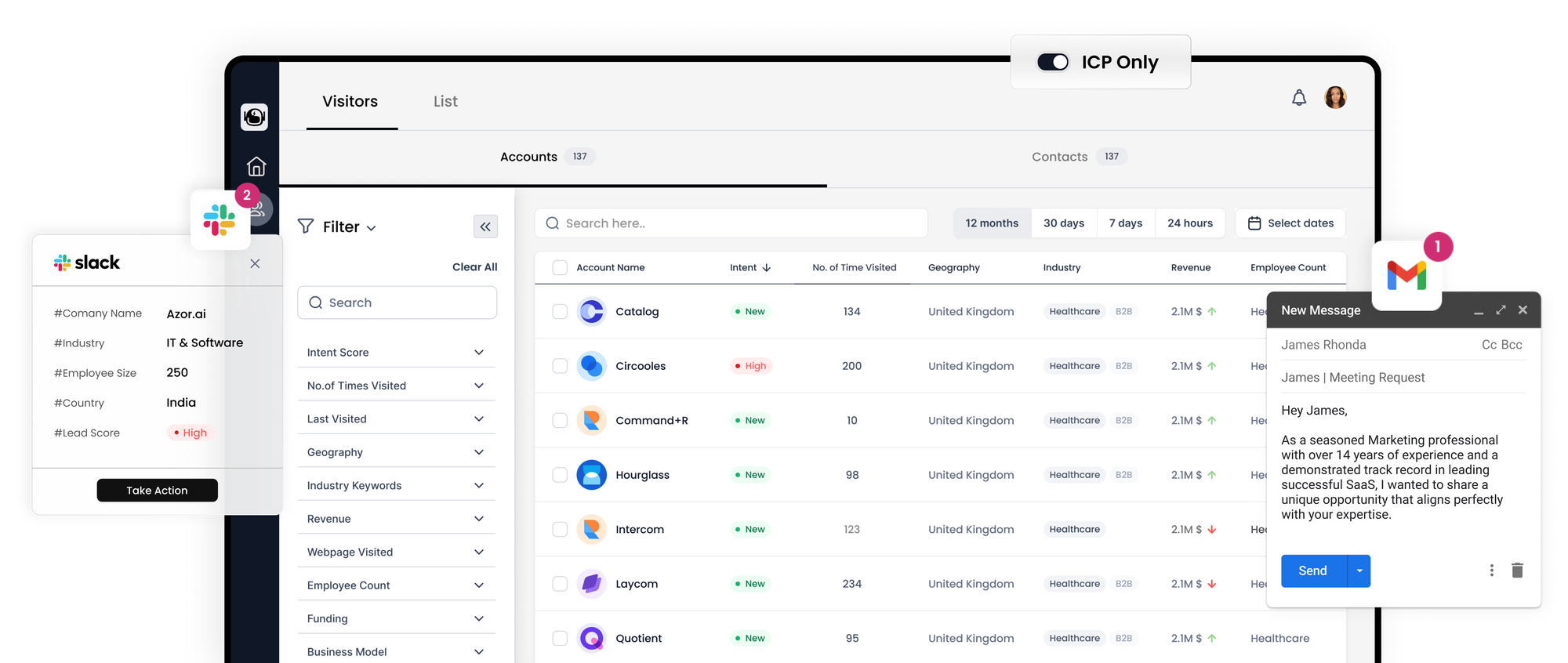A Comprehensive Approach to Account-Based Marketing Strategy

Navigating the complexities of B2B marketing often feels like an uphill battle. The challenge lies not just in generating leads but in identifying and nurturing high-quality prospects who are genuinely interested in what you have to offer. This is where an Account-Based Marketing (ABM) strategy can be a game-changer for your business.
ABM isn’t merely another trend in the digital marketing realm. It’s a strategic approach that flips the traditional marketing funnel on its head, starting with identifying specific high-value accounts and then crafting personalized marketing strategies tailored to each one.

Understanding Account-Based Marketing
ABM focuses on directing marketing resources to engaging a specific set of target accounts. It involves personalizing your messaging and campaigns to meet the unique needs and pain points of these accounts. This focused approach contrasts with traditional lead generation methods that cast a wider net to attract a large audience.
Here’s why ABM stands out:
1. **Targeted Approach:** Unlike generic marketing strategies, ABM zeroes in on specific high-value accounts, which makes it particularly effective for enterprise-level customers.
2. **Collaboration Between Teams:** ABM requires a harmonious partnership between marketing and sales teams, ensuring a unified approach in targeting and engaging accounts.
3. **Utilization of Marketing Automation:** Leveraging technology for automation is key in ABM, aiding in aspects like lead generation and follow-up processes.
4. **Building Personal Relationships:** ABM is about establishing and nurturing close relationships with key decision-makers within the target accounts.
Account-Based Marketing Vs. Traditional Lead Generation
Consider a scenario where you run an enterprise SaaS company targeting financial institutions. Traditional marketing might involve creating content for the financial sector at large, hoping the right prospects find and engage with it. This broad approach often lacks precision and personalization, making it challenging to connect with the right decision-makers.
How ABM Transforms Marketing Strategy
In ABM, instead of a blanket approach, you focus on specific financial institutions that align with your ideal customer profile. You might track website visitors or conduct in-depth research to understand these institutions better. Then, you tailor your marketing efforts – from content creation to campaign execution – to resonate with these specific targets.
Think of traditional marketing as casting a wide net, hoping to catch whatever comes your way. In contrast, ABM is akin to using a specialized bait to attract and catch a specific type of fish you know is perfect for your needs.
Implementing Account-Based Marketing
Let’s break down the implementation with an illustrative example:
In a general inbound marketing strategy, you might create a blog post about how your SaaS tool helps combat accounts payable fraud, targeting a broad audience on platforms like Facebook or LinkedIn.
ABM takes a different route. You first identify the companies that are your ideal customers. After thorough research to understand their specific concerns – say, accounts payable fraud – you create content that directly addresses this issue. This tailored approach ensures that your marketing efforts resonate deeply with your target accounts, increasing the likelihood of engagement and conversion.
In summary, while ABM may seem unconventional compared to traditional marketing methods, its targeted, personalized approach makes it highly effective, especially in the B2B domain. By focusing on specific high-value accounts and tailoring your marketing strategies to their unique needs, ABM allows you to fish with precision, ensuring a higher quality of catch that aligns perfectly with your business objectives.
Unlocking the Power of Account-Based Marketing
Account-Based Marketing (ABM) is revolutionizing the B2B landscape by offering a more tailored approach to business growth. With nearly 92% of B2B companies recognizing its critical importance, ABM is not just a fleeting trend but a robust strategy that drives substantial results.
Why ABM Matters in B2B Marketing
ABM isn't a one-size-fits-all solution; it's about precision and relevance. Let's delve into its core advantages:
1. **Enhanced ROI:** Approximately 87% of marketers report a higher return on investment with ABM compared to other marketing methods.
2. **Efficiency and Focus:** ABM targets specific accounts, leading to more efficient use of resources and time.
3. **Shorter Sales Cycles:** ABM often results in shorter sales cycles, as many companies using ABM report sales cycles of less than 90 days.
4. **Building Trust:** By showing a deep understanding of customer needs, ABM fosters trust and credibility with potential clients.
5. **Higher Deal Sizes:** ABM focuses on quality over quantity, resulting in better deal sizes and contract values.
ABM Beyond Enterprise Customers
While ABM is particularly effective for enterprise-level clients, its principles can be applied to any B2B customer. The key lies in tailoring your approach to meet the specific needs and challenges of your target accounts, whether they are large corporations or smaller businesses.
Crafting Your ABM Strategy
To implement a successful ABM strategy, follow these steps:
1. **Data Gathering and Target Identification:** Start by identifying high-value companies using tools like visitor identification on your website, CRM data, and business directories.
2. **Tiering Your Prospects:** Classify prospects based on their potential value and accessibility. Use tools like LinkedIn Sales Navigator for research, aiming to find the most relevant contacts within each organization.
3. **Prioritizing Prospects:** Rank your prospects based on engagement levels, questions asked in forums, and website visits. Pay special attention to prospects who demonstrate a strong interest in your solutions.
4. **Personalized Content Creation:** Develop content tailored to address specific challenges and pain points of each target account. This could be blog posts, whitepapers, or even personalized emails.
5. **Delivering Tailored Messages:** Use persona and account-specific information to distribute your content through the most effective channels, such as LinkedIn ads, email marketing, or direct mail.
Success Stories in ABM
Consider the case of Triuvare, an ICT company that identified leads downloading their ICT Tendering Guide as hot prospects. They knew these leads were close to purchasing and tailored their efforts to convince them of Triuvare’s value proposition.
The Human Element in ABM
Amidst the focus on tools and data, it's crucial not to lose sight of the human aspect of marketing. Whether targeting a B2B employee or a consumer, the end goal is to foster a personal connection with the individuals making purchasing decisions. Remember, at the heart of every successful ABM strategy are the people, not just the numbers or metrics.
In summary, ABM is an invaluable strategy for B2B marketers looking to forge meaningful connections with high-value accounts. By focusing on specific target accounts, personalizing your marketing efforts, and remembering the human element in business relationships, you can significantly enhance your marketing outcomes and drive business growth.
